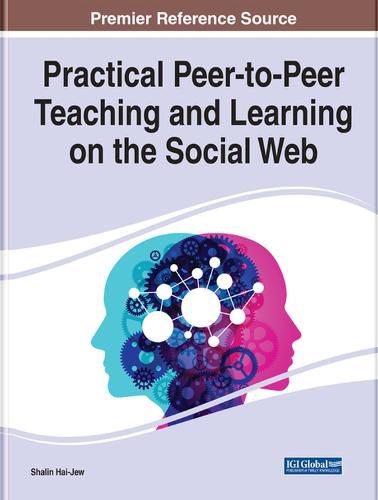Readings Newsletter
Become a Readings Member to make your shopping experience even easier.
Sign in or sign up for free!
You’re not far away from qualifying for FREE standard shipping within Australia
You’ve qualified for FREE standard shipping within Australia
The cart is loading…






This title is printed to order. This book may have been self-published. If so, we cannot guarantee the quality of the content. In the main most books will have gone through the editing process however some may not. We therefore suggest that you be aware of this before ordering this book. If in doubt check either the author or publisher’s details as we are unable to accept any returns unless they are faulty. Please contact us if you have any questions.
On the Social Web, people share their enthusiasms and expertise as lay teachers. On almost any topic of interest, learners may find some peer-created resources, created by individuals with varying expertise (from amateurs and novices to experts). In DIY culture, with widely available video cameras and authoring tools, people have gone online to share knowledge, skills, and abilities (KSAs) broadly. What has not been explored more clearly is just how effective such peer-to-peer teaching and learning are and how well such contents acculturate learners into professional roles.
This work explores the efficacies of such online (often remote) teaching and learning, with materials by peers. This considers how deep an expertise bench exists in the broad public for various learning topics.The objectives of the book are to consider the intended and unintended outcomes of the sharing of open-shared learning online as well as explore some practical ethics in the sharing of teaching and learning online. Moreover, this reference provides insights about what is made available for teaching and learning by the public and considers design features related to peer-to-peer and crowd-sourced teaching and learning online. The intended audience includes teachers, instructional designers, instructional developers, software developers, user interface designers, academicians, researchers, and students.
$9.00 standard shipping within Australia
FREE standard shipping within Australia for orders over $100.00
Express & International shipping calculated at checkout
This title is printed to order. This book may have been self-published. If so, we cannot guarantee the quality of the content. In the main most books will have gone through the editing process however some may not. We therefore suggest that you be aware of this before ordering this book. If in doubt check either the author or publisher’s details as we are unable to accept any returns unless they are faulty. Please contact us if you have any questions.
On the Social Web, people share their enthusiasms and expertise as lay teachers. On almost any topic of interest, learners may find some peer-created resources, created by individuals with varying expertise (from amateurs and novices to experts). In DIY culture, with widely available video cameras and authoring tools, people have gone online to share knowledge, skills, and abilities (KSAs) broadly. What has not been explored more clearly is just how effective such peer-to-peer teaching and learning are and how well such contents acculturate learners into professional roles.
This work explores the efficacies of such online (often remote) teaching and learning, with materials by peers. This considers how deep an expertise bench exists in the broad public for various learning topics.The objectives of the book are to consider the intended and unintended outcomes of the sharing of open-shared learning online as well as explore some practical ethics in the sharing of teaching and learning online. Moreover, this reference provides insights about what is made available for teaching and learning by the public and considers design features related to peer-to-peer and crowd-sourced teaching and learning online. The intended audience includes teachers, instructional designers, instructional developers, software developers, user interface designers, academicians, researchers, and students.